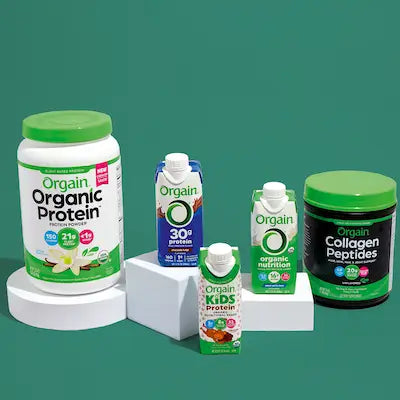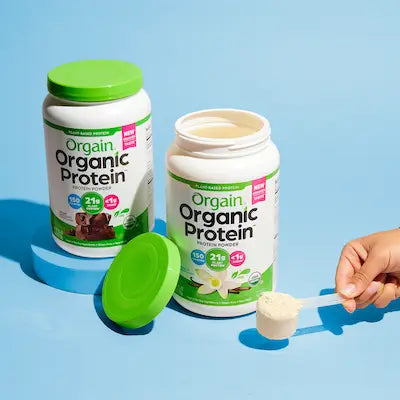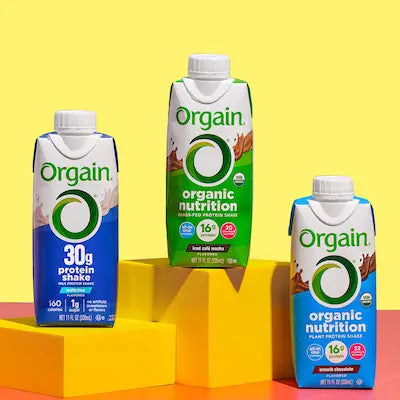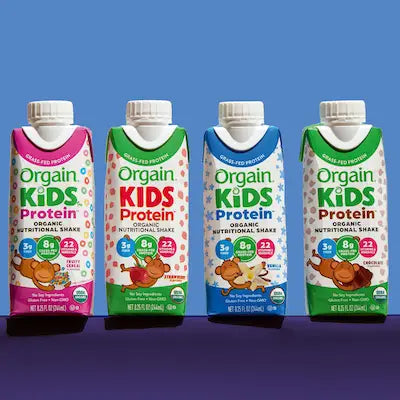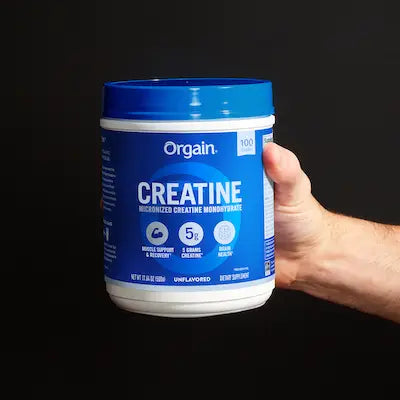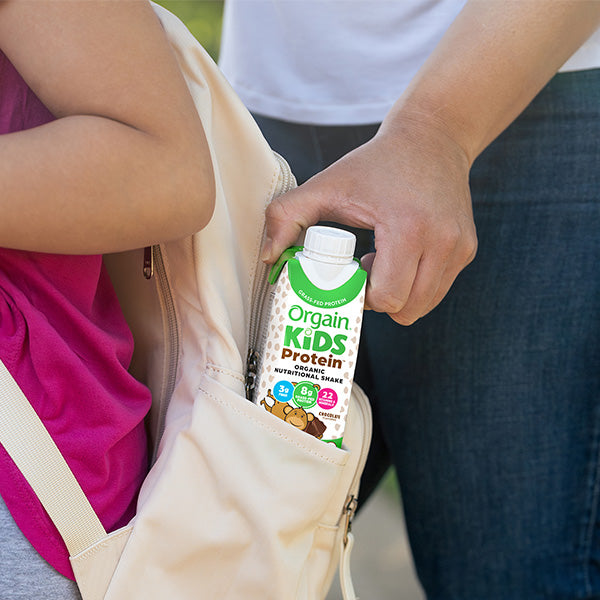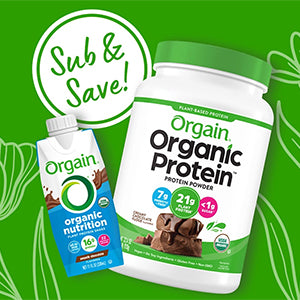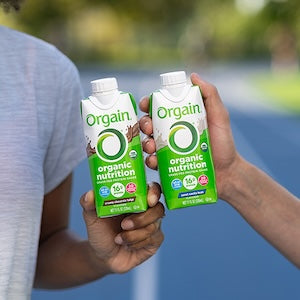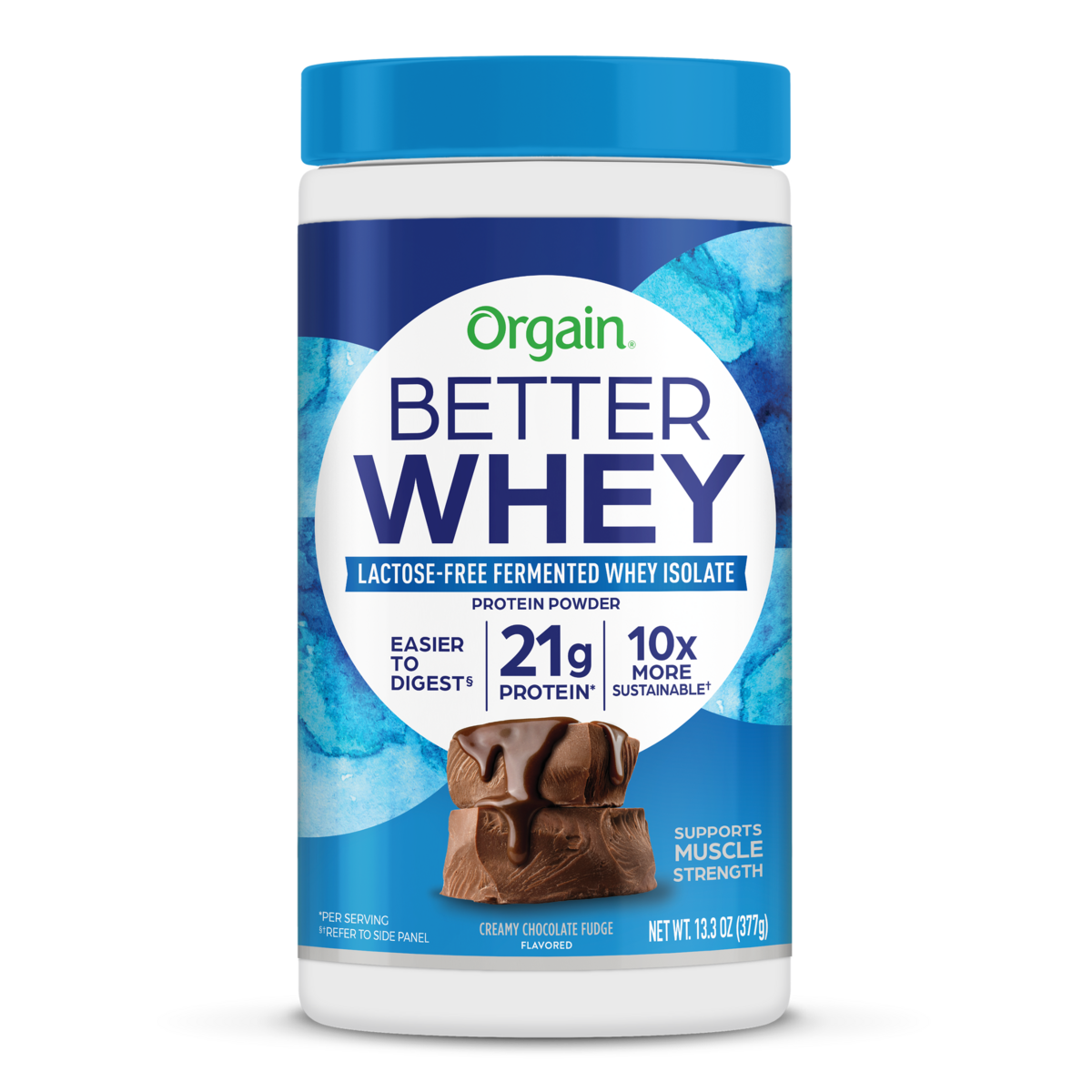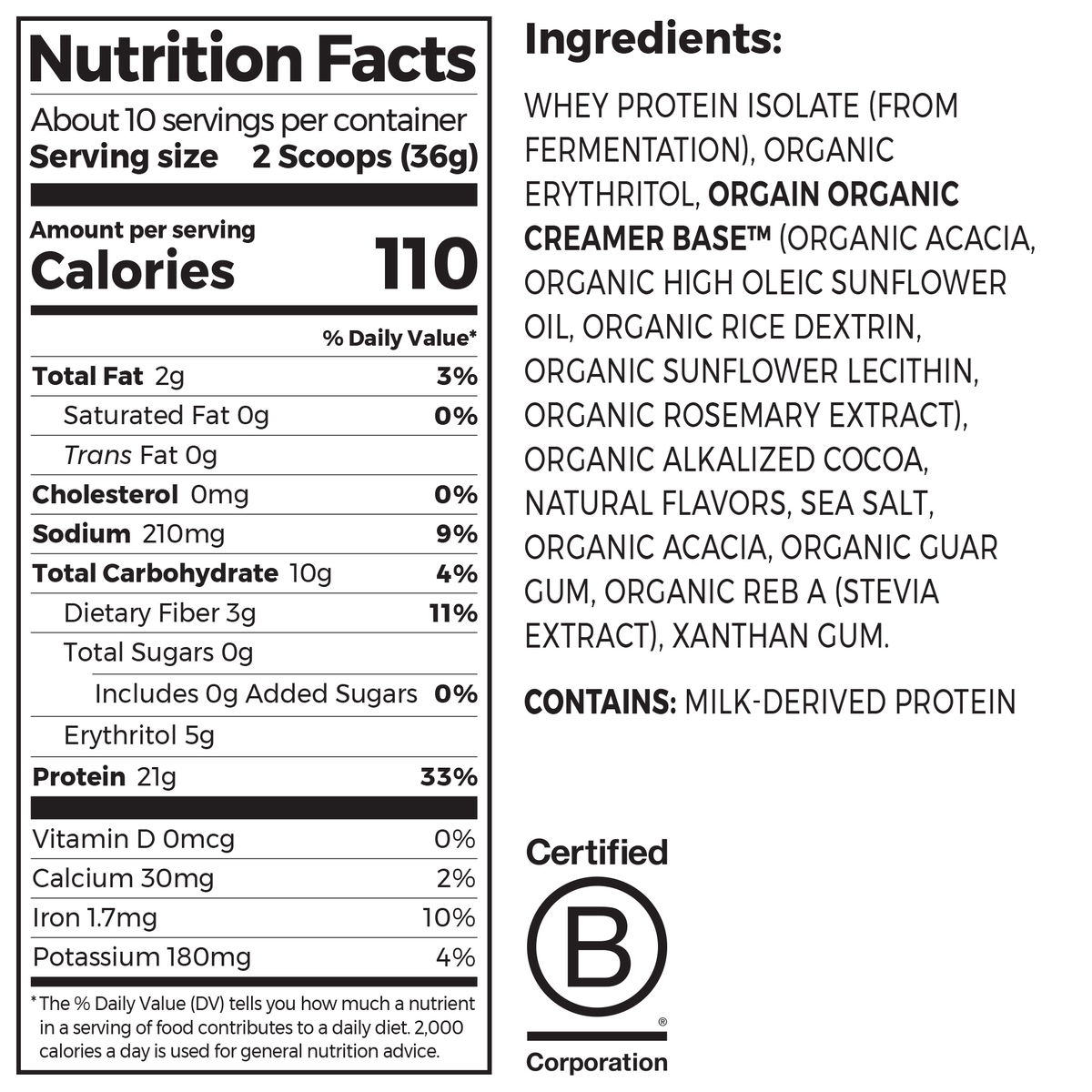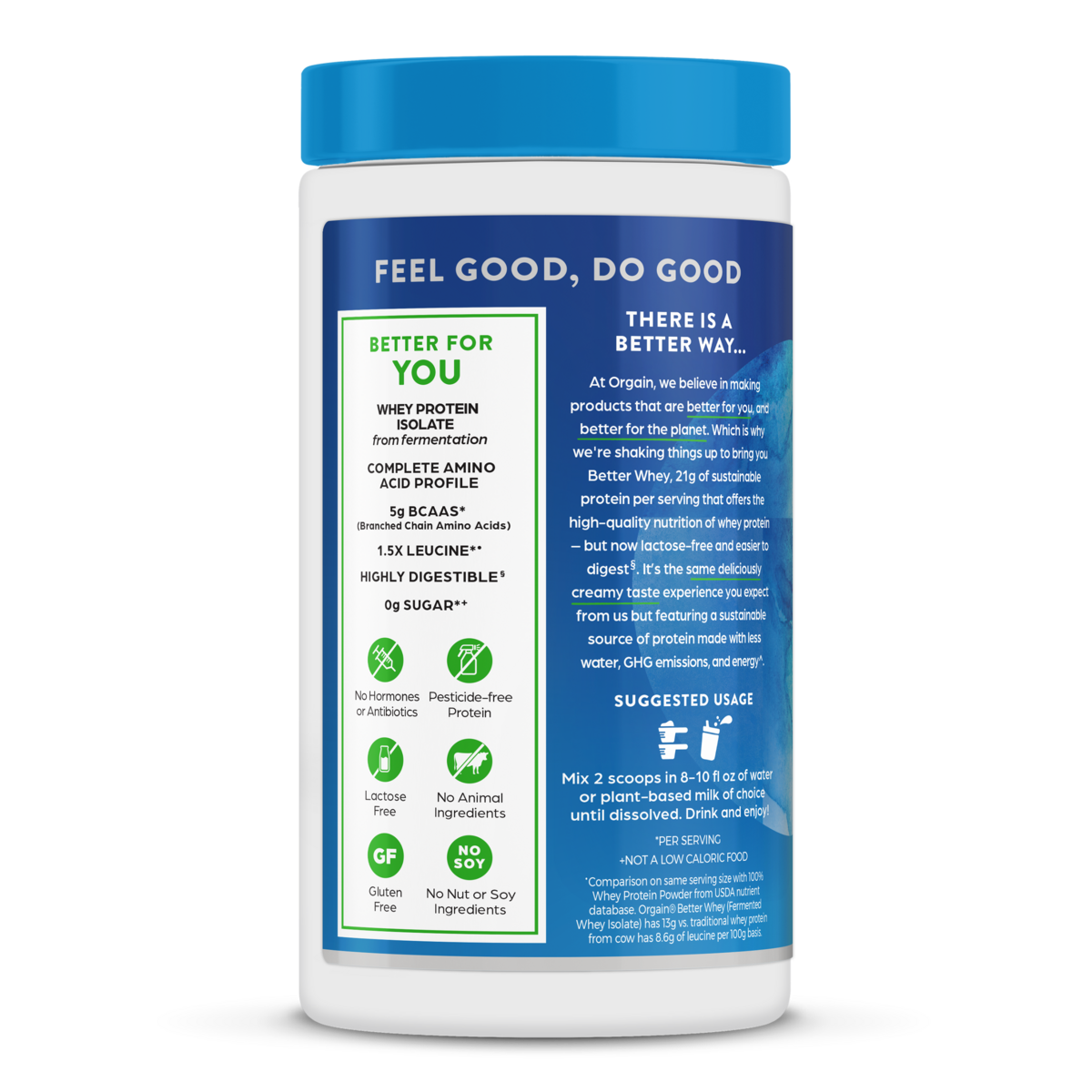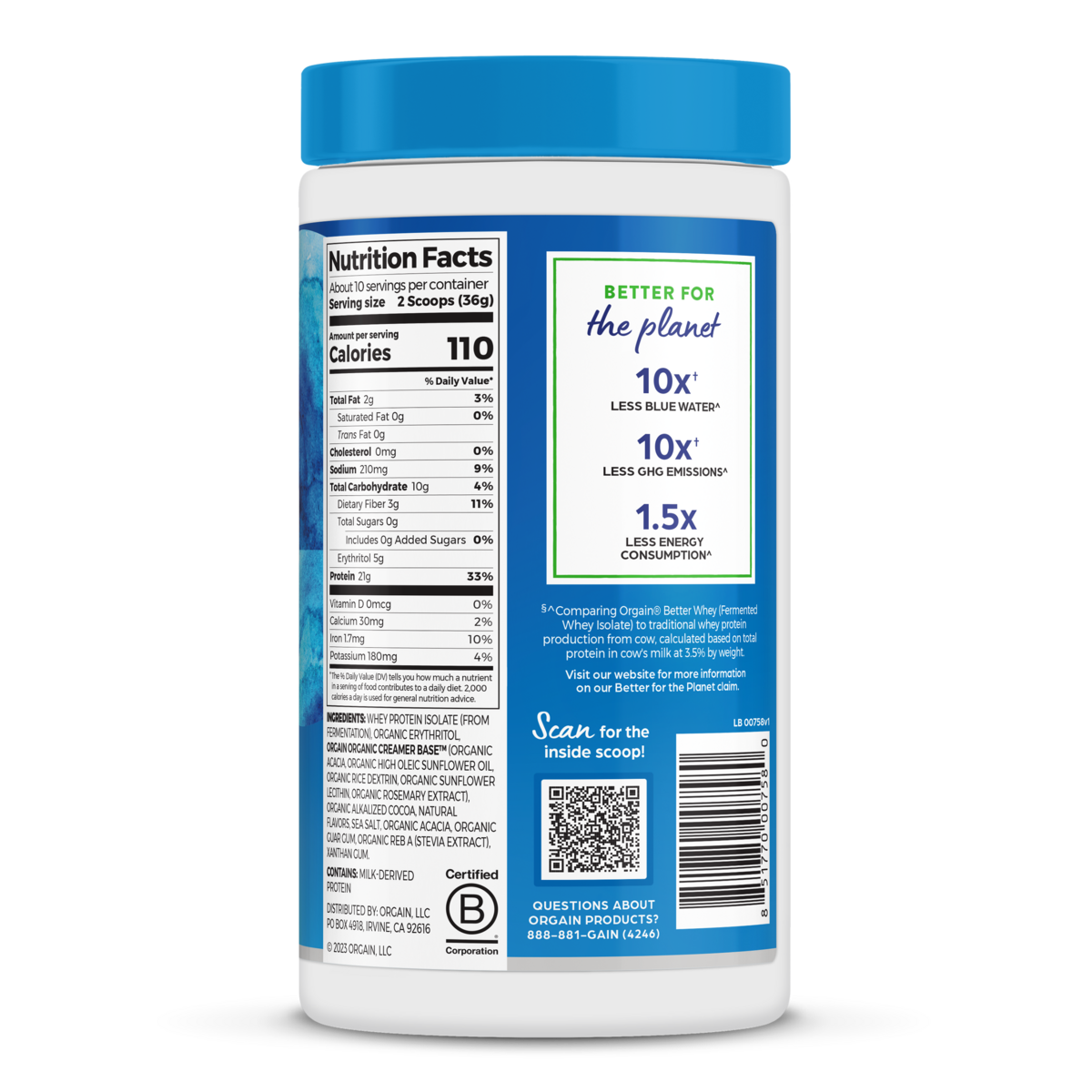Fuel up with the delicious high-quality nutrition of whey protein – now made from fermentation, so it’s lactose-free and easier to digest**, while using less water***(1), less GHG emissions***(1), and less energy consumption***(2) than traditional whey protein.
* Per serving
** Compared to traditional whey protein. The traditional whey protein from cows digestibility number is 0.95. Whey protein isolate from fermentation’s digestibility number is 0.96. The higher value of protein digestibility value indicates the easier to be digested.
^ Compared to 100% whey protein powder from USDA nutrient database. 13g of leucine in Orgain Better Whey fermented whey isolate vs. 8.6g of leucine in traditional whey protein from cows per 100g basis.
+ Not a low calorie food
*** Comparing Orgain Better Whey (Fermented Whey Isolate) to traditional whey protein production from cows
(1) Calculated with the same total corrected protein content at 1kg (3.5% w/w protein) by the blue water consumption. GHG (Green House Gas) Emissions are measured in carbon dioxide-equivalents (kg-CO2e) in average number per 1kg of protein. This is measured in kilograms of CO2-equivalents per 1kg of protein (kgCO2 eq per 1kg protein)
(2) The low heating value approach was used to determine the primary energy from non-renewable resources and is measured in megajoules (MJ)
Blue Water: Based on blue water which refers to a consumption of water use captured the amount of water consumed by the system, not just total withdrawals. This is measured by Liters (L) – total amount of water withdrawn from and not returned to surface and ground water sources. The two major sources of water consumption for both Fermented whey and Bovine whey: Fermented Whey (Protein Development at 50.1%, and Cleaning at 14%), and Bovine Whey (Drinking and Cleaning – using 40 gal per day, range 30-50 gal per day The Value of Water (psu.edu)). https://www.ncbi.nlm.nih.gov/pmc/articles/PMC5149046/ , 19. Hoffman JR, Falvo MJ. Protein-Which is best. J. Sports Sci. Med. .2004;3:118–30
Green House Gas Emissions: Emissions are measured in carbon dioxide-equivalents (kg CO2e) in average number per 1,000 grams of protein. This is measured in kilograms of CO2-equivalents per 1000g of protein (kgCO2eq per 1000g protein). Source: Poore, J., & Nemecek, T. (2018). Reducing food’s environmental impacts through producers and consumers. Science, 360(6392), 987-992.
Energy Consumption: The low heating value approach was used to determine the primary energy from non-renewable resources and is measured in megajoules (MJ). Source: Energies 2020, 13, 1288; doi:10.3390/en13051288.
Calculated based on total protein in bovine milk at 3.5% by weight.
